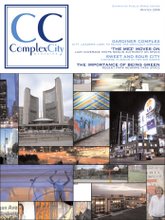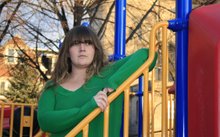Pleasant dreams

BY SEAN PEARCE
Mount Pleasant Cemetery in Toronto is the tranquil final resting place of many famous Canadians. Amid the tall, ancient trees and quiet marble slabs lie former prime minister William Lyon Mackenzie King, department store magnate Timothy Eaton and insulin discoverers Frederick Banting and Charles Best just to name a few. Yet, Mount Pleasant Cemetery is not just another graveyard. Its aged trees, spacious fields and many paths are also used by the living for jogging, cycling and appreciating the little bit of serene green amid so much grey. For a naturalist the cemetery is indeed a little slice of heaven.
Roger Powley is a member of the Toronto Field Naturalists. A few times each year his group organizes a trip to visit Mount Pleasant Cemetery and take in a little bit of the natural setting it provides. A big part of that is the arboretum located on the cemetery grounds.
“One of the reasons (we go there) is the arboretum,” Powley said. “They have trees from all over the world there, so if you want to learn about trees that’s the best place in the city to learn; it’s almost the best place in the country.”
According to Powley, another draw for the nature seeker is the possibility of spotting some wild animals. The cemetery itself is 200 acres and connects to other parks and natural areas as well. This gives wildlife plenty of space to roam and hide.
“I’ve seen coyotes and deer,” he said. “You never know what you’re going to find.”
When asked if any of the participants have been too scared to enter the cemetery Powley laughs.
“I know there’s some superstitious people who don’t like going into cemeteries, but it’s not that common,” Powley said.
Fear of the cemetery doesn’t seem to be keeping anyone away. The site has proven popular with hikers, runners and others who want a little taste of the outdoors. Several travel guides and websites list Mount Pleasant Cemetery as an ideal spot for avid cyclists. David Dunn, an engineer with Toronto’s Transportation Services Department, says, in the case of Mount Pleasant Cemetery, making it part of the city’s bike network just seemed to make sense.
“The bike plan was (initiated) by looking at existing routes and seeing how they would fit in with our grid network,” Dunn said. “In this case we saw trails already in use and made a logical connection.”
It might seem likely that given Mount Pleasant Cemetery’s primary role as a resting place for the deceased that concerns, either out of respect or superstition, might have been raised about its inclusion as part of the bike network. But, according to Dunn, he doesn’t recall any objections to the route.
“There might have been the odd comment,” Dunn said. “But off the top of my head I don’t recall.”
Rick Cowan, vice-president of marketing and communications with the Mount Pleasant Group of Cemeteries, says the cemetery welcomes the public to use its space as long as they remember to be respectful of those there to mourn their loved ones. It’s a difficult balance to maintain sometimes.
“It was always the opinion of the founders of Mount Pleasant Cemetery … that the cemetery should be a place for the living as well and we’ve always encouraged passive recreation at our cemeteries,” Cowan said.
Even though the cemetery still invites the public in, Cowan says the land is privately owned. Some people seem to forget this and show little respect or sympathy towards people mourning or attending funeral services.
“We’ve had situations where joggers are jogging through the cemetery and are talking rather loudly and they’ll forget there’s a graveside service going on at the time,” he said. “It’s quite disruptive emotionally and distressing when they’re there, at that time, basically running through (a family’s) service.”
Yet, noisy joggers aren’t the worst of it. Rollerblading is, in fact, banned at the cemetery. Cowan says the reason for the ban was because a person rollerblading along one of the cemetery paths collided with an elderly woman paying her respects, breaking her arm. The cemetary haseven been aproached by cyclists wanting to use its paths as racetracks.
“We’ve actually had people strolling with their buggies during the day holding up funeral processions,” he said. “They look at it like, ‘This is my place, my public space,’ but they forget that there are people mourning the loss of their loved ones.”
“It’s a really delicate balancing act we have to play, because we really want people to enjoy the cemetery,” Cowan said. “But we also want people to be respectful of those who are there to mourn.”





No comments:
Post a Comment